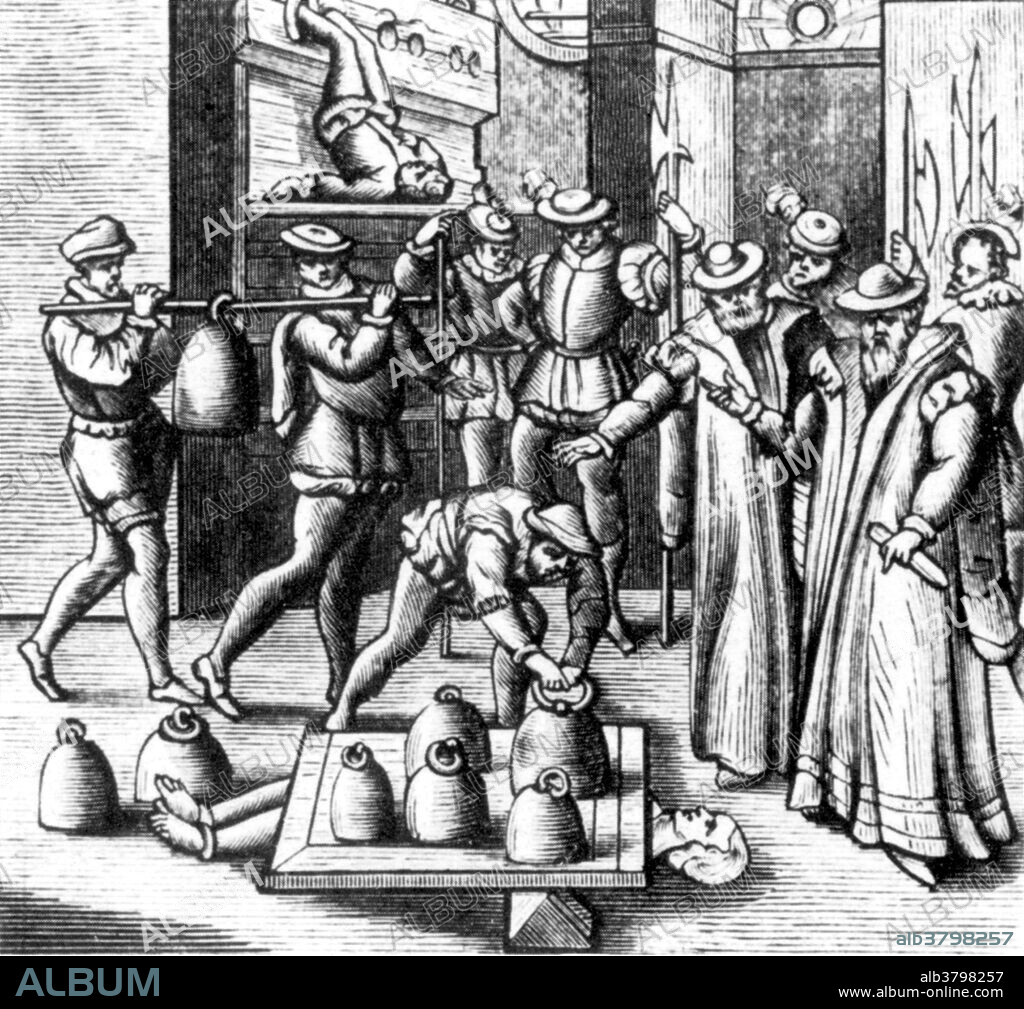alb3798257
Peine forte et dure, Legal Torture, 16th Century

|
Zu einem anderen Lightbox hinzufügen |
|
Zu einem anderen Lightbox hinzufügen |



Haben Sie bereits ein Konto? Anmelden
Sie haben kein Konto? Registrieren
Dieses Bild kaufen

Titel:
Peine forte et dure, Legal Torture, 16th Century
Untertitel:
Siehe automatische Übersetzung
Peine forte et dure (hard and forceful punishment) was a method of torture formerly used in the common law legal system, in which a defendant who refused to plead would be subjected to having heavier and heavier stones placed upon his or her chest until a plea was entered, or the defendant died. Many defendants charged with capital offenses would refuse to plead in order to avoid forfeiture of property. If the defendant pleaded either guilty or not guilty and was executed, their heirs would inherit nothing. If they refused to plead their heirs would inherit their estate, even if they died in the process. The procedure was recorded by a 15th century witness: "He will lie upon his back, with his head covered and his feet, and one arm will be drawn to one quarter of the house with a cord, and the other arm to another quarter, and in the same manner it will be done with his legs; and let there be laid upon his body iron and stone, as much as he can bear, or more..." Peine forte et dure was abolished in Great Britain in 1772, with the last known actual use of the practice having been in 1741. Torture is the act of deliberately inflicting physical or psychological pain in order to fulfill some desire of the torturer or compel some action from the victim. Woodcut from unknown source, 1500s.
Bildnachweis:
Album / NYPL/Science Source
Freigaben (Releases):
Model: Nein - Eigentum: Nein
Rechtefragen?
Rechtefragen?
Bildgröße:
3900 x 3640 px | 40.6 MB
Druckgröße:
33.0 x 30.8 cm | 13.0 x 12.1 in (300 dpi)
Schlüsselwörter:
 Pinterest
Pinterest Twitter
Twitter Facebook
Facebook Link kopieren
Link kopieren Email
Email
